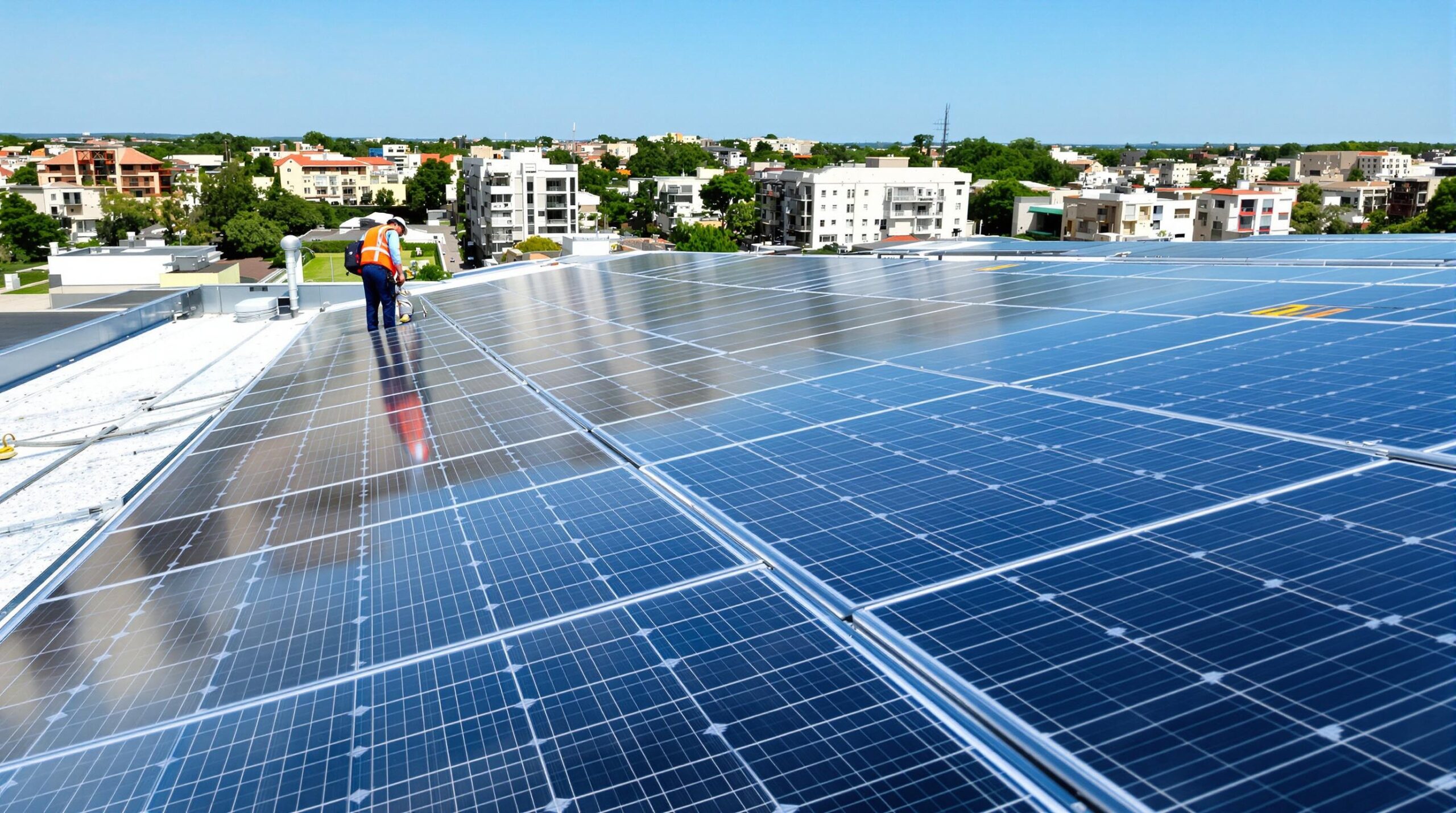Solar energy technology has steadily advanced over the last decade. Now, a groundbreaking achievement in solar panel efficiency could revolutionize the entire market. Researchers have developed a novel method of converting sunlight into electricity more efficiently than ever before. This innovation has the potential to drastically cut energy costs for businesses and homeowners alike.
The Science Behind the Breakthrough
Traditional silicon-based solar panels have hovered between 15% and 22% efficiency. The new breakthrough utilizes perovskite-based materials combined with updated silicon cell architecture. This hybrid approach leverages the unique photovoltaic properties of perovskite crystals. By stacking these materials, engineers captured a broader spectrum of sunlight, transforming more photons into usable electricity.
Researchers overcame significant engineering challenges by optimizing layer thickness and reducing material defects. They achieved a record-breaking efficiency rate of 30%. This marks a notable improvement over conventional designs and establishes a new industry benchmark. Laboratory tests have already confirmed these results under various environmental conditions.
Key Benefits of Higher Solar Panel Efficiency
Boosted efficiency directly translates to more electricity output from each square meter of solar panels. Homeowners can install fewer panels while generating more power, which reduces upfront installation costs. The enhanced performance is particularly valuable in areas where space is limited. Commercial installations will benefit from higher returns on investment and faster cost recovery.
Energy output uniformity has also improved due to the new system’s robustness under low-light and partial-shadow conditions. As a result, systems perform reliably even on cloudy days or during early morning and late afternoon. Energy providers will see increased grid reliability as solar takes on a greater share of power generation.
Economic Impact and Cost Reductions
The efficiency leap holds enormous promise for reducing energy costs at every level. Higher output per panel means less space and material are needed for the same amount of energy. This reduces manufacturing, transportation, and installation expenses. Furthermore, perovskite materials are less expensive than refined silicon, offering additional cost savings.
Consumers should expect to see lower utility bills as the technology becomes widely adopted. Utility-scale solar farms can produce more power within existing infrastructure. Over time, as solar adoption accelerates, wholesale electricity prices may decline due to greater supply and lower generation costs. Governments supporting solar development can accelerate this trend by offering incentives and streamlined regulatory approvals.
Environmental and Sustainability Advantages
Improved solar efficiency supports the global transition toward clean, renewable energy. By squeezing more electricity from the same amount of sunlight, carbon emissions decrease. Power plants based on fossil fuels can be retired faster, helping countries meet climate and sustainability goals. Less raw material use also translates to a smaller environmental footprint for producing solar systems.
Additionally, the new panels’ recyclability provides an extra sustainability advantage. Manufacturers have developed processes to reclaim perovskite and silicon at the end of system lifespans. This closed-loop approach lessens electronic waste and makes solar power even more environmentally friendly.
Real-World Pilot Projects and Deployment
Demonstration projects have already begun in several countries. Research institutions are working with commercial partners to test installation and performance in a variety of climates. Early reports show output boosts consistent with laboratory results, even under challenging weather conditions. These pilots pave the way for broader adoption across both the residential and commercial energy markets.
Utility companies are joining these efforts by upgrading solar farms with the new high-efficiency modules. Some cities have integrated the panels into municipal buildings, schools, and infrastructure projects. Successful pilots provide confidence to investors and regulatory bodies, driving rapid scaling and mass production.
Overcoming Challenges to Widespread Adoption
While the breakthrough offers tremendous promise, a few challenges remain before worldwide rollout. Manufacturing lines must adapt to the new materials and hybrid architectures. Some experts caution that perovskite stability under prolonged exposure needs further improvement for maximum longevity. Firms are addressing these concerns through continuous research and refinement of encapsulation techniques.
Industry coalitions are working together to establish standards and best practices for production and installation. Training programs are preparing technicians and installers for the transition. Once these hurdles are addressed, the path to market leadership will clear. Costs will further decline as economies of scale are realized.
Looking Forward: The Future of Solar Power
Higher-efficiency solar panels could become mainstream within just a few years. Many experts predict mass deployment will occur by 2027. As production scales up, consumer access and affordability will improve rapidly. Solar electricity could soon outcompete fossil fuels in almost all markets worldwide.
This transition will have far-reaching consequences for energy independence and national security. Countries less reliant on imported fuels will be more resilient against price shocks and supply disruptions. Local economies will benefit from jobs in manufacturing, installation, and maintenance. Expanded access to clean energy enables communities to control their energy futures and reduce pollution.
Conclusion
The new solar panel efficiency breakthrough is a defining moment for the renewable energy industry. By nearly doubling electricity output from sunlight, the technology will make solar power more accessible and affordable than ever before. Energy costs are set to fall, benefiting consumers and businesses alike. Environmental impacts will decrease, accelerating progress toward global climate goals. As manufacturers and governments act to overcome remaining technical and regulatory challenges, solar power is poised to claim center stage in the worldwide shift to clean energy.


